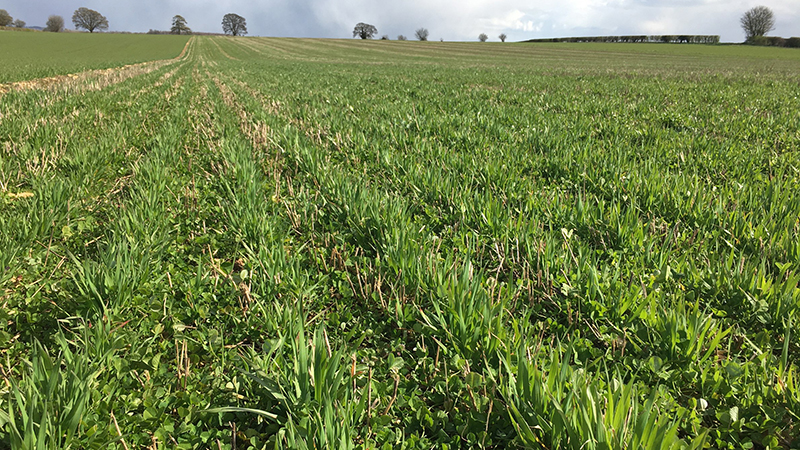
Contract Period : 03/11/2022 -
Main Funder : The Elizabeth Gilmour Charitable Foundation, Organic Arable
ORC Staff Contact : Julia Cooper

Exploring the potential of direct drilling cash crops into established stands of clover, also known as a living mulch.
Living Mulches: a (semi) permanent clover understory.
Two key services that need to be delivered for agricultural systems to function productively are weed control and nitrogen supply. Conventional systems rely heavily on costly herbicides and artificial fertiliser. Whilst Organic systems need an effective alternative to chemical inputs and a way to reduce tillage. Both systems experience soil fertility depletion during the rotation and there is a current lack of enhancing or protecting the soil.
Living Mulches are (semi) permanent clover understories. Undersowing with clover is a common practice amongst organic and regenerative farmers, who seek to establish leys or employ relay cropping to provide permanent soil cover. The innovation here comes in the second year when a cereal is drilled into the established mulch, which in the case of the trials has been using a 70:30 mix of wild white (AberAce) and medium leaf (AberHerald) white clover as recommended by technical experts at Cotswold Seeds who have done their own experimentation in this area. The clover can remain until the weed pressures are too high and then mechanical or chemical intervention is required.
In this webinar we presented updates on the Living Mulches project as well as a review of last year’s soil health data from the living mulch trials at Green Acres farm. Matt England from Fring Estate and David Newman from Bucksum market garden shared their experiences of integrating living mulches into their farming systems.
Isabel Mackintosh of ORC outlined our work on living mulches to the Organic Growers Gathering in October, and explained that they we now looking to expand the network to include horticultural growers.
Philippa speaks to Henny Lowth about the approach to ORC’s Living Mulches research in 2023 and up and coming results from the newly established trials, taking the project forward.
Henny explains the principles of what a Living Mulch is and the project’s farmer-led approach so far, with farmers such as Mark Lea and the feedback loops between research and practice.
The results so far showed a significant yield penalty in the Living Mulch, with ~32% yield loss. In addition, there was an increasing abundance of perennials and grass weeds across the mulch plots in the three established trials. This was expected, with the clover unlikely to provide enough competition against perennials like docks or thistles. This may suggest that these living mulch systems, at least for organic farming, may need to be shorter term with only one or two years of no till before perennial and grass weeds need to be controlled.
The project so far has brought together stakeholders to maximise learnings and knowledge exchange whilst conducting on-farm experimentation to provide empirical evidence to help guide the farmers decision making process. There has been collaboration with Cotswold Grass Seeds, who offered technical advice, as well as sponsorship from the AHDB and Organic Arable through the Innovative Farmers programme, and the current trials are supported by the Elizabeth Gilmour Charitable Foundation.
Whilst the yield penalty and the build-up of perennials, is certainly something that is likely to dissuade farmers from adopting this approach, there are so many other, often unquantifiable benefits to the system. Increased biodiversity, increased forage for sheep and an already established cover crop protecting the soil post-harvest. By extending the rotation, to include an additional year of cash cropping with an integrated ley, farmers can reduce their tillage, which protects soil health as well as reducing fuel, labour and seed costs as cover crops are no longer necessary.
In terms of soil health, the practice has shown to significantly increase available Nitrogen, increase soil microbial activity, worm counts and improve VESS scores.
The practical application needs to be optimised in order to reduce the current yield losses that we have seen so far. By knocking back the clover at key times, the competition between the clover and the crop can be reduced and the yield penalty can be alleviated. This management balancing act between cash and cover crop growth throughout the season is the fundamental challenge to a working Living Mulch system in order to harness the benefits of this permanent cover whilst limiting the risks to productivity since first and foremost food is the major public good supplied by farming.
The No-till with Living Mulches Field Lab with Innovative Farmers demonstrated that:
For more information see: Living Mulches: Final Report 2020-2022
Leading the project